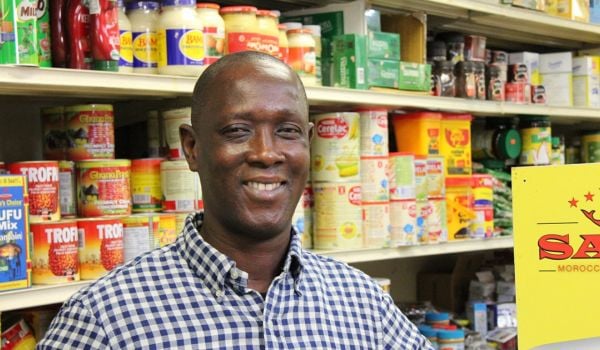Earlier this year, investors closed on the Black Vision Fund, raising $29 million. Created by the Expanding Black Business Credit (EBBC), a network of seven leaders of Black-owned CDFIs and funded by institutions such as Wells Fargo and Amalgamated Bank, the fund will funnel money to disadvantaged Black and small businesses across the country. The overall strategy of the fund’s investors is to create another credible option to try to close the racial wealth gap.
The U.S. Treasury studied the impact of small businesses’ applications for credit from 2012 to 2017 and found, notably, that while Black-owned businesses, weren’t shy about applying for credit or financing, less than 47% of their loans were fully funded — less than any other category of applicants.
The closing of the fund is one reason CDFI industry veterans such as Mary Houghton and Bill Bynum maintain that the CDFI space remains healthy, despite some concerns that corporations might be cutting back on funding minority initiatives or Black businesses as social issues such as George Floyd fade further in the rearview mirror. Houghton, president of EBBC, and Bynum, chairman of EBBC and chief executive officer of Hope Credit Union, were instrumental in creating the Black Vision Fund (BVF). Houghton was one of the co-founders of ShoreBank Corp., the first CDFI in the U.S., and in 1995 Bynum organized Hope, which has generated $3.6 billion in financing for more than 2 million people, mostly the unbanked and underbanked, in several states in the south. It’s one of the CDFIs tasked with funneling funds from BVF to Black businesses.
We recently spoke with Houghton and Bynum about why they believe the Black Vision Fund goes beyond just symbolic action by corporations and why they remain bullish on the outlook for the CDFI industry.
Why is the Black Vision Fund important for the CDFI industry at this time?
Houghton: The EBBC got together because banks had pulled back even more in lending to Black-owned businesses and these seven CDFIs were particularly interested in delivering resources to Black-owned businesses. They all believed, as I do, that financing African American enterprises is one of the very best and [most] direct ways to reduce the racial wealth gap. Individuals are more likely to accumulate net worth from a business than through wage accumulation.
As we know, there are and have been other initiatives to close the wealth gap. Why are you optimistic about the BVF?
Houghton: The goal of the group was working together to collaboratively raise capital so that they were able to obtain larger [funding] in longer commitments. When we began to create the fund and when the fund actually closed, the George Floyd period came through. There’s been a period when large corporations made very big commitments to funding Black firms.
The situation has changed. So, today the best rationale for the fund was that it was an act of leadership by these seven CDFIs to try to use the fund and their desire to work together as a message about how important it is that … the entire country understands that many more institutions need to be lending to Black-owned businesses. I think the fund was a successful collaboration. And there are not all that many examples of collaborative fundraising.
Bill. What’s your vision of the fund?
Bynum: The Black Vision Fund was established to level the playing field for Black-owned businesses by demonstrating the value of capitalizing Black-led lenders that have demonstrated a commitment to financial inclusion.
Are you satisfied with the amount of money the fund raised?
Bynum: In addition to supporting increased lending by BVF members, the initial closing fuels our collective data collection and our joint advocacy and sharing of best practices.
Mary, will the closing of BVF, which you and Bill suggest was a success, make it easier to create another fund like this?
Houghton: I don’t think we’d decide to do another fund. The ideas that are being discussed are more in the categories of (for example) building a pipeline of attracting more talent into the CDFI industry.
You suggested that corporations, for one, are winding down their commitment to Black businesses. So, what’s your outlook for the CDFI space in light of this?
Houghton: I’m very optimistic. First, it’s been growing very, very steadily for the past five, 10 years. Two, is that very talented people have been leaving the banking industry to work for these CDFIs. Three, the federal government this year is dispensing $9 billion in near equity to about 200 certified CDFI banks, credit unions and minority depository institutions.
That’s a lot of money
Houghton: My industry is going to grow very, very effectively and strongly over the next three to five years. But it will still be the case that the total assets of the CDFI industry are just a small fraction of the total assets of the banking industry.
Bill, how would you describe the state of the CDFI space — healthy or more challenges ahead?
Bynum: In many ways, CDFIs are stronger than ever. The field has received historic levels of public and private funding and recognition, largely due to their success in addressing racial disparities in SBA’s Paycheck Protection Program.
Growing recognition of the vital role played by CDFIs, and increased support for financial inclusion by private and public investors bodes well for the future.”

This story is part of our series, CDFI Futures, which explores the community development finance industry through the lenses of equity, public policy and inclusive community development. The series is generously supported by Partners for the Common Good. Sign up for PCG’s CapNexus newsletter at capnexus.org.
Christopher C. Williams is a New Jersey-based freelance financial writer. He worked for many years with Dow Jones Newswires and Barron’s Financial Weekly and has contributed to publications including the Wall Street Journal, The New York Times and Essence magazine. He focuses on the intersection of business, economic equity and racial justice.
















